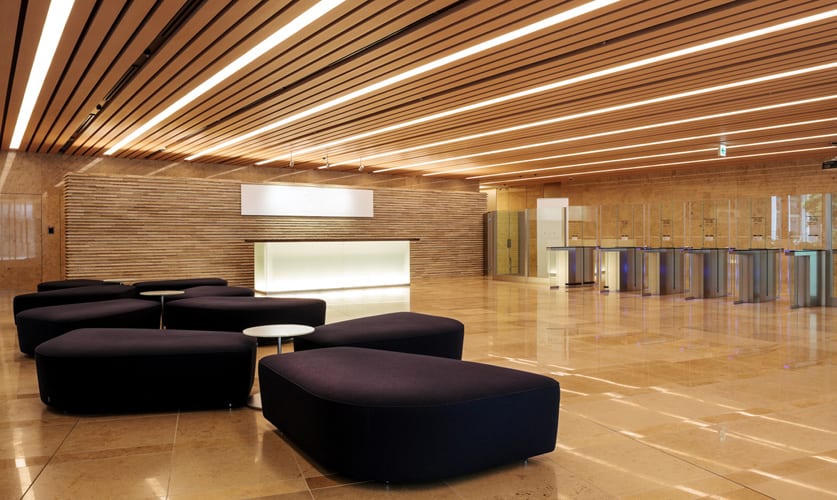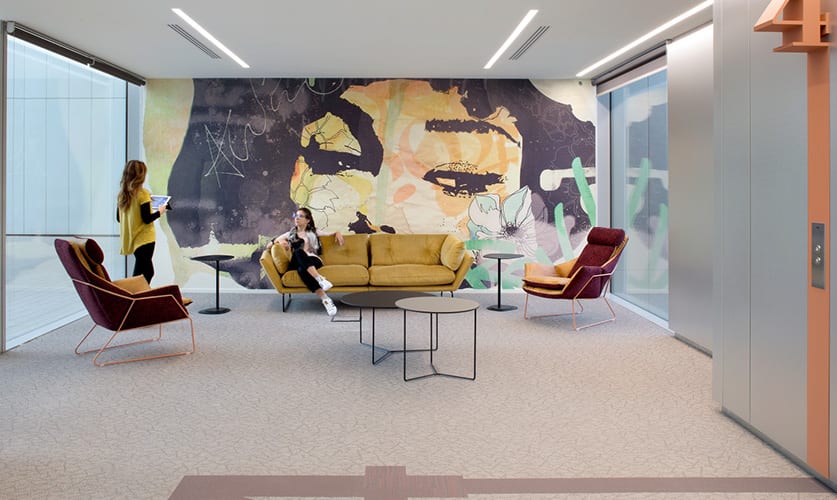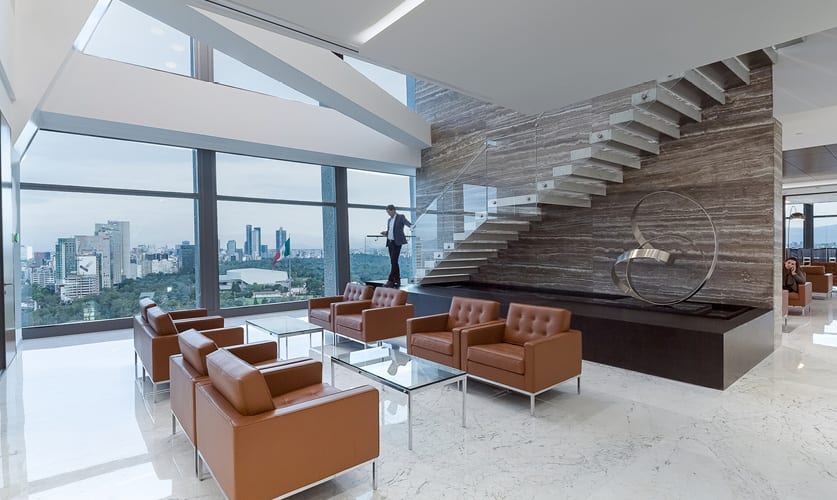By Kim Parsley, LEED AP | Managing Principal
July 11th, 2018

Confidential Client, Tokyo.
For a candid conversation on what it takes to have an international interior architecture and design presence, we caught up with Managing Principal Kim Parsley, who has led IA teams on strategic assessment projects ranging from 20,000-sq.-ft. to 3-million-sq.-ft. throughout the Americas, Europe, India, and China. Her expertise focuses on the development of comprehensive workplace solutions that require sensitivity to future-proofing plus human resources, real estate, design, and facilities management issues.
Being a global firm, IA has created the capability to represent clients nationally and internationally. How do you build teams with the appropriate expertise?
IA has established locations throughout the US and in Canada and London. Each of our offices has a diverse staff but we all share a strong common culture and appreciation for our global reach. Our professionals overall are very excited about being part of something that goes beyond the city where they work and that has a global impact. Many of our team raise their hand to be a part of our international projects and have prior experience internationally. Teammates who are passionate about the potential to work globally are the first step toward a successful outcome.

Confidential Client, Milan. Photo © Barbara Corsico.
What unique skillsets are ideal for the right team to do international work?
Working across multiple time zones isn’t for everyone. On a given assignment, your team and the client’s stakeholders may be spread across three or more time zones. And in many instances, they are over 13 hours apart. This alone can be complicated. Patience with planning appropriate meeting times for all is critical. On all sides, the team must be willing to work outside the normal eight-to-five work day. This isn’t just for calls and meetings alone, but also for thinking ahead to be prepared when everyone is online or when quick responses are needed. This is extremely important.
Like any relationship, some face-time at key milestones can accomplish a lot more than relying on phone calls and emails throughout the duration of a project. With different languages and dialects involved, a phone-only relationship can go sideways. You don’t have the benefit of reading body language and other important non-verbal cues, making communication challenging for the team.
To take this to another level, the awareness of cultural differences is essential as these can affect verbal, non-verbal, and etiquette do’s and don’ts. What we may find acceptable in the US, UK, and Canada may be offensive in another country or vice versa. It is not for one culture to impose their communication protocols or etiquettes on others, but instead to acknowledge the differences and respect them.

Baker McKenzie, Mexico City. Photo © Hector Armando Herrera.
How do you deliver appropriate design solutions when your projects are located in a different country?
Our teams have been working globally for many years. We continue to bring the knowledge we gain on each account/assignment forward to our next opportunity. In addition, IA has established a Global Alliance of partner firms. This is a group of like-minded architecture and interior design firms located in major cities across the world. They work closely with us to deliver appropriate design solutions – from a materials availability standpoint to appropriate design details relevant to local skilled labor and local culture. Based on our experience, we can guide our clients through the ins and outs of a project down to the details of finishes and the furniture quality and availability in their market, as well as the options and impacts of importing. Some countries have very limited goods available; therefore, the added time and costs associated with customs and imports are a reality that must be understood and dealt with.

Confidential Client, Milan. Photo © Barbara Corsico.
What is one of the more interesting lessons learned that you've experienced while working internationally?
We had a project in Sao Paulo, Brazil, a couple of years ago, the same year the World Cup was hosted in Rio de Janeiro. Our project was experiencing construction delays beyond the team’s control, and we were warned that work would shut down during the World Cup if the project wasn’t completed before then. We knew that football was hugely popular, but for businesses tocompletely shut down nation-wide for a sporting event is unheard of in the US. We assumed the threat of mass-closure was an overstatement until multiple subcontractors unequivocally confirmed that work would shut down. Fortunately, the construction pushed on, and the project was successfully delivered in time for all of us to enjoy the World Cup. With this experience, we learned that culturally you have to take a penetrating look at assumptions you tend to take for granted. Take nothing for granted when working internationally and anticipate the unexpected.
Want to Learn More About Our Global Presence?
Then you'll probably appreciate our blog post on trends in activity-based working in the APAC region.
Bringing strategic assessment to an international audience.

